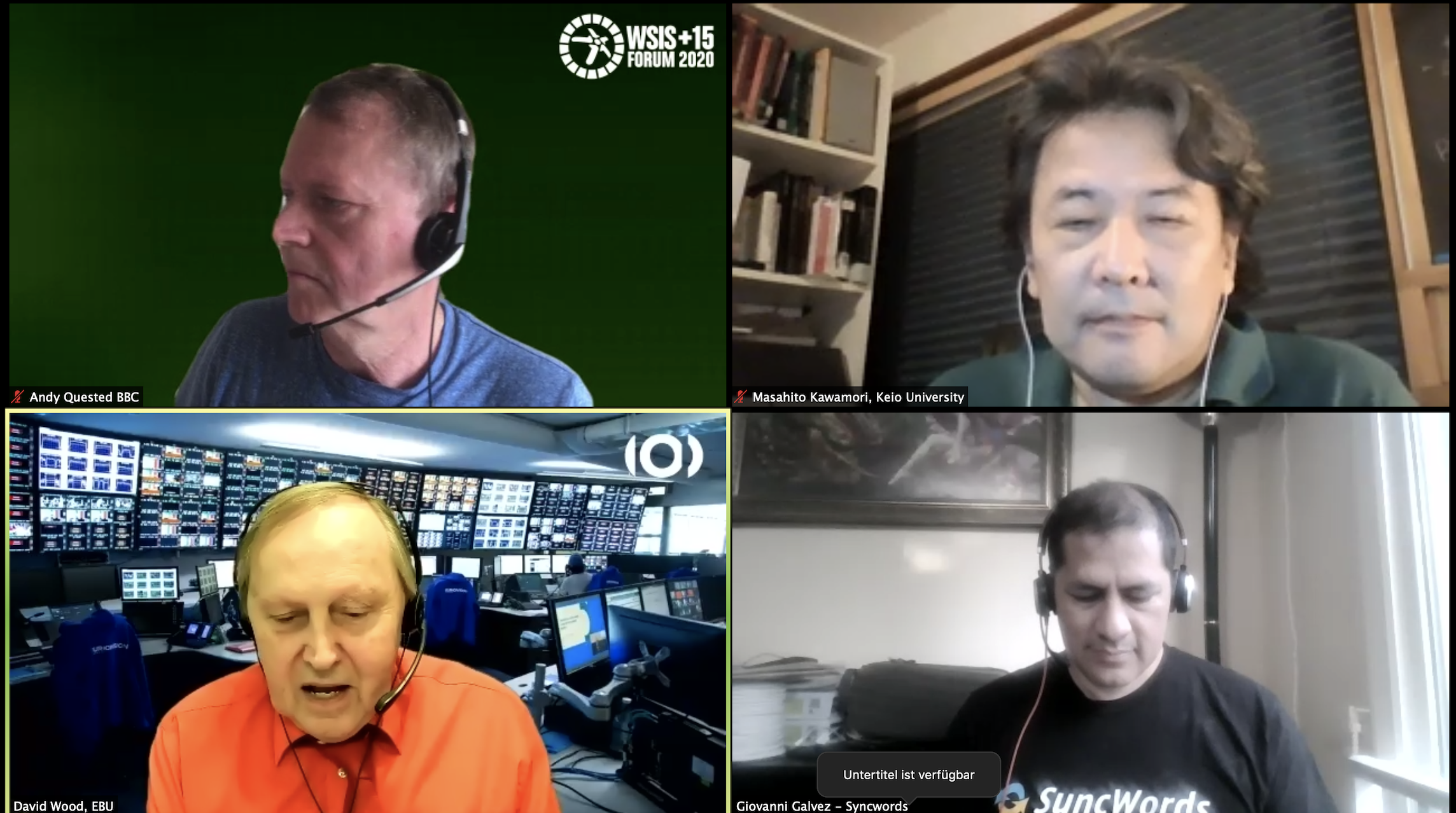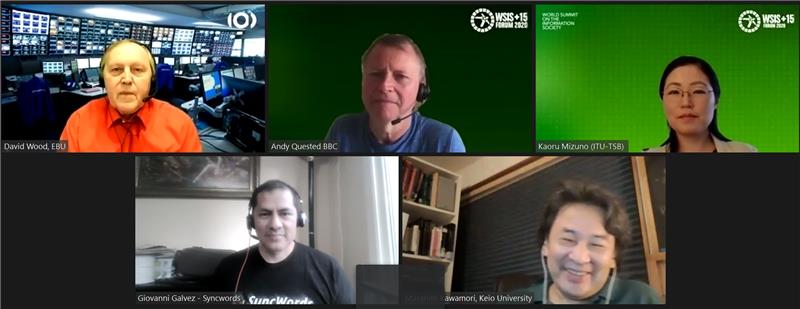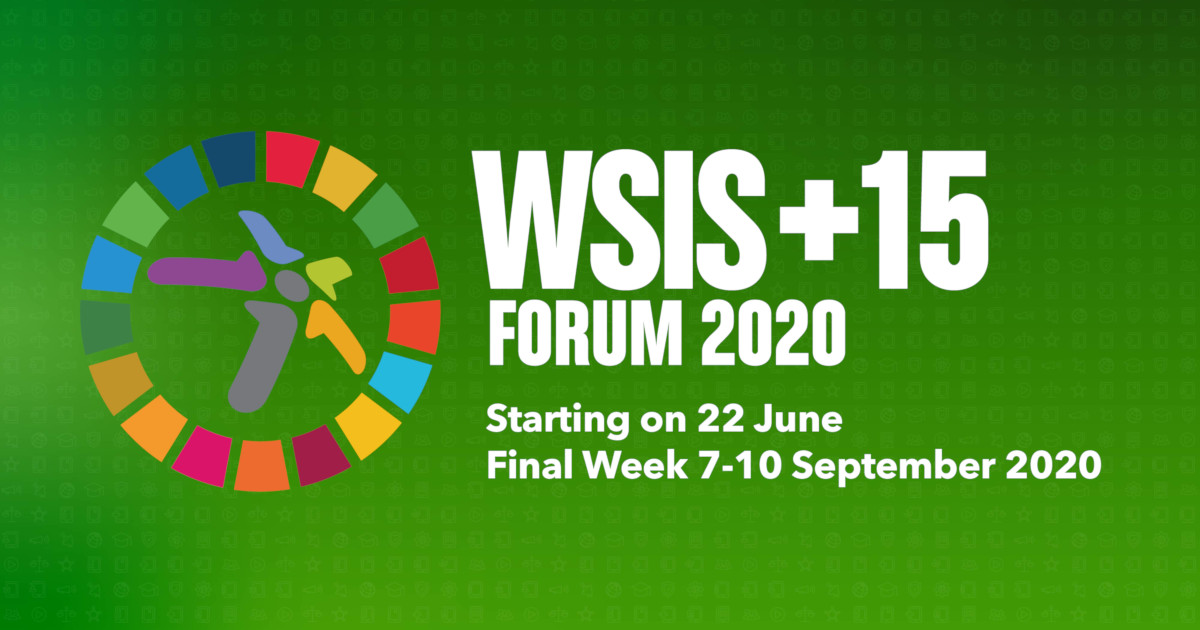How to engage the whole audience: innovation in media accessibility
ITU Intersector Rapporteur Group Audiovisual Media Accessibility
Session 132
The webinar will outline some of the recent thinking about how to enable media accessibility with current tools and ideas. As one of the use cases, AI machine translation of captioning will be demonstrated by SyncWords.
Moderator: David Wood
Speakers:
1. (13:05-13:15) Introduction to User Profiles and Personalisation, Pradipta Bitwas
2. (13:15-13:25) Accessibility through Personalisation, Andy Quested
3. (13:25-13:35) AI Machine Translation for Live News and Sport, Giovanni Galvez
4. (13:35-13:45) Introduction to accessibility needs during Covid-19 pandemic, Masahito Kawamori
5. Discussion: speakers with David Wood and Pilar Orero, Members IRG-AVA
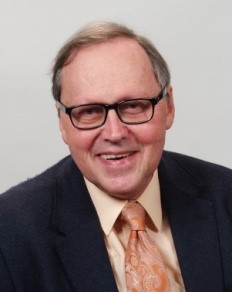
Dr David Wood has chaired standards groups in the ITU and DVB for many years. He led the work that resulting in the ITU specifications for digital television, high definition television, and ultra-high definition television. More recently he led the DVB work analysing Virtual Reality systems. He currently is a co-chair of the ITU IRG-AVA group which is examining the possibilities for common access systems for all media, broadcast, broadband, internet, and cable, and the ITU-R on audio renderers. He is Consultant, EBU Technology and Innovation.
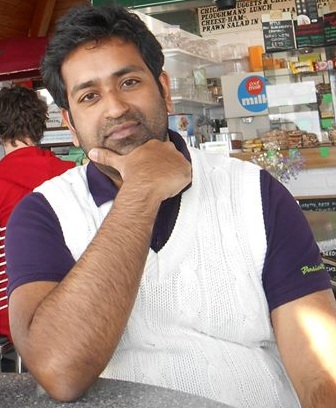
Pradipta Biswas is an assistant professor at the Centre for Product Design and Manufacturing (CPDM) and affiliated faculty at the Robert Bosch Centre for Cyber Physical Systems (RBCCPS) of Indian Institute of Science. His research focuses on user modelling and multimodal human-machine interaction for aviation and automotive environments and for assistive technology. He set up and leads the Interaction Design (I3D) Lab at CPDM, IISc. Pradipta is a Co-Chair of the IRG AVA and Focus Group on Smart TV at International Telecommunication Union. He is a member of the UKRI International Development Peer Review College, Society of Flight Test Engineers and was a professional member of the British Computer Society, Associate Fellow at the UK Higher Education Academy and Royal Society of Medicine. Earlier, he was a Senior Research Associate at Engineering Department, Research Fellow at Wolfson College and Research Associate at Trinity Hall of University of Cambridge. He completed PhD in Computer Science at the Rainbow Group of University of Cambridge Computer Laboratory and Trinity College in 2010 and was awarded a Gates-Cambridge Scholarship in 2006.
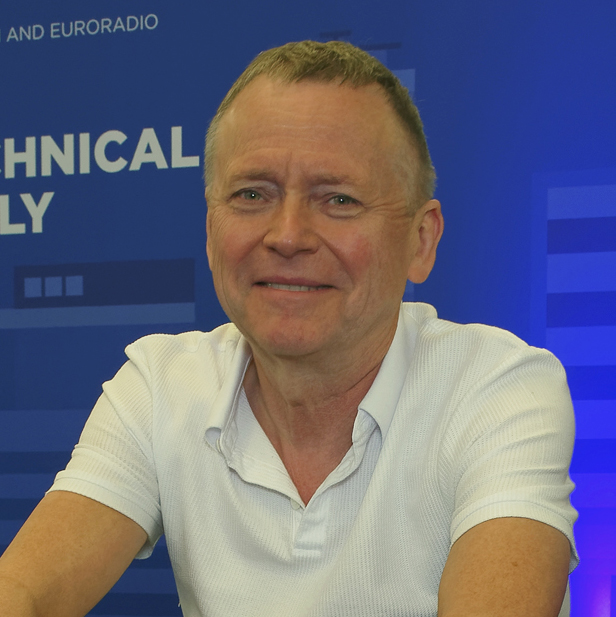
Andy Quested started as a BBC Technical Assistant in 1978 becoming a video-tape editor in 1985 where he worked on many comedy, children’s and documentary series.
In 1998 Andy moved to a new technology department working on the BBC’s first HD programmes including Planet Earth I and the first UHD programme, Planet Earth II
He is technical lead of the UK’s Digital Production Partnerships AS-11 format and leads the EBU Production Strategic Group looking at all areas of content production. He is an active member of SMPTE becoming a Fellow in 2014 for work relating to standards
Andy is currently the chair of ITU-R Working Party 6C where he initiated new areas of study on Advanced Immersive Audio-Visual Systems and Artificial Intelligence in content production and international programme exchange.
.jpg)
Giovanni brings over 15 years of experience in the closed captioning and subtitling field, and expertise in broadcast TV, social, and new media. In addition, he has cultivated a close relationship with major broadcast organizations in North America that use accessibility and video delivery workflows. Giovanni and his team were recognized with an Emmy Award in 2015 for standardizing and pioneering development of non-live broadband captioning. He is currently working on AI powered technology to automate timing and translation of subtitling streaming projects.
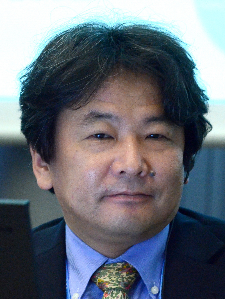
Masahito Kawamori is a Project Prof. at the Media and Governance School, Keio University, Japan. Before joining Keio University in 2013, he had been a senior research engineer of NTT, which he joined in 1989 to do research and development in application of artificial intelligence, to convergent systems for mobile and fixed telecommunication, such as conversational robots and humanoids. This became, in 1998, a part of Japan Science and Technology Agency's program called Core Research for Evolutional Science and Technology Program that aimed at "Creating the Brain". Since 2000, he was involved in several projects in and outside of Japan to apply metadata and ontology for various services including, but not limited to, telecommunication and broadcasting, which have led to global standards that are currently commercially deployed in several services. He is also actively involved with the International Telecommunication Union, part of the United Nations.
-
 C3. Access to information and knowledge
C3. Access to information and knowledge
-
 C9. Media
C9. Media
-
 Goal 1: End poverty in all its forms everywhere
Goal 1: End poverty in all its forms everywhere
-
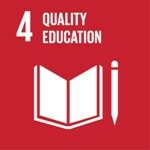 Goal 4: Ensure inclusive and equitable quality education and promote lifelong learning opportunities for all
Goal 4: Ensure inclusive and equitable quality education and promote lifelong learning opportunities for all
-
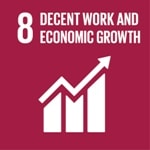 Goal 8: Promote inclusive and sustainable economic growth, employment and decent work for all
Goal 8: Promote inclusive and sustainable economic growth, employment and decent work for all
-
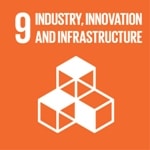 Goal 9: Build resilient infrastructure, promote sustainable industrialization and foster innovation
Goal 9: Build resilient infrastructure, promote sustainable industrialization and foster innovation
-
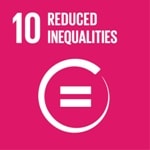 Goal 10: Reduce inequality within and among countries
Goal 10: Reduce inequality within and among countries
ITU IRG-AVA
ITU-R SG6 Broadcasting Service
ITU-T SG9 Broadband cable and TV
ITU-T SG16 Multimedia
Demo on AI machine translation of real-time captioning at this Webinar
